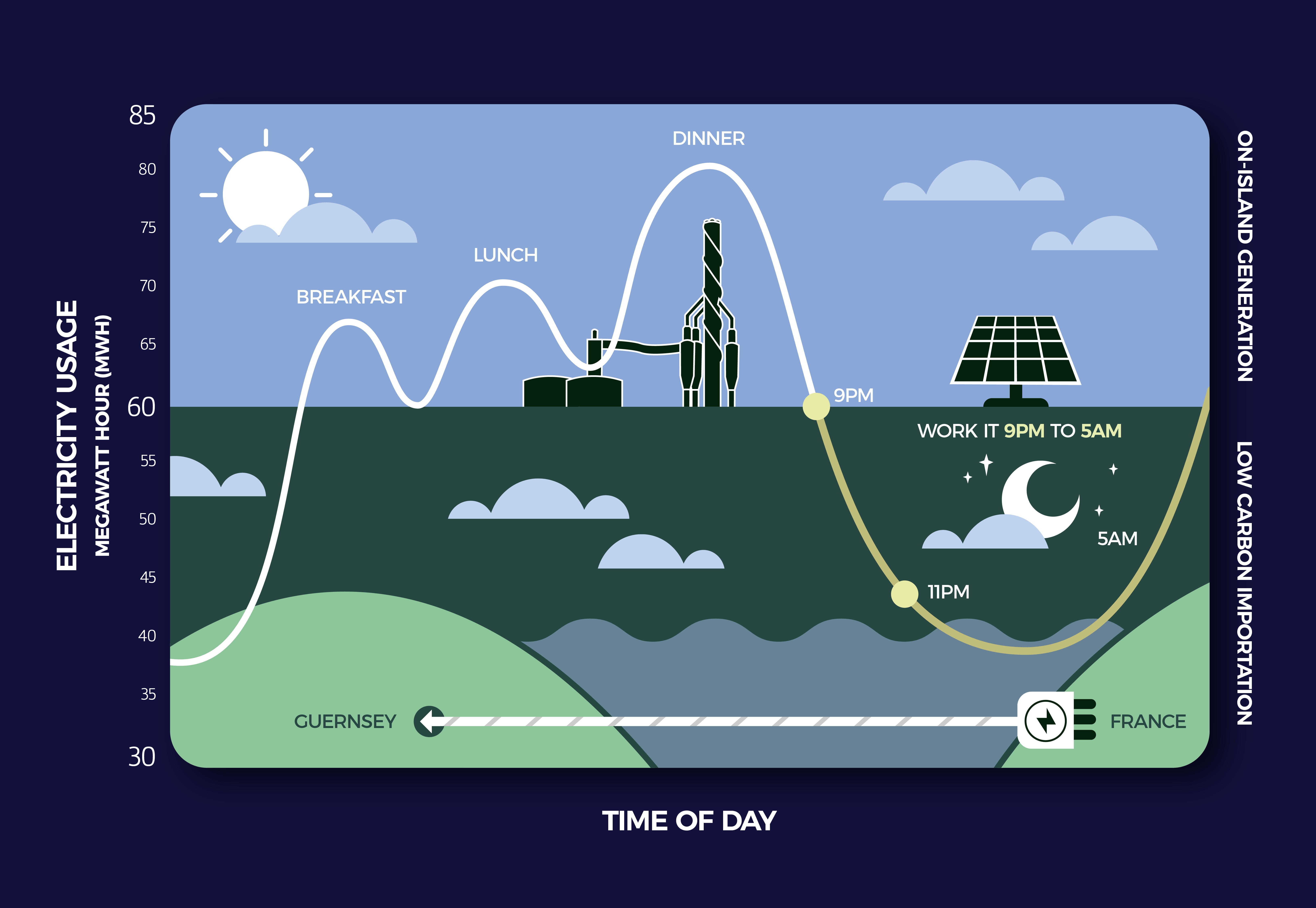Guernsey Electricity will guarantee to accept all Additional Load Applications for ‘Off-Peak Storage Heating’ solutions up to 18kW*
What does this mean?
To help those who want to convert to electric heating, we’ve recently implemented a policy where any additional load application for storage heating, or other off-peak heating solutions, up to 18kW* will always be accepted onto the network.
Electric boilers and other electric heating solutions demand electricity from the grid during ‘peak’ times, which is when the grid must work at full capacity to provide power. This means there can sometimes be cases where additional load applications are refused because there simply isn’t enough capacity in that area of the network to power electric heating during peak times.
“However, during overnight off-peak periods, there is far more capacity available for everyone”
This supports island-wide load management and grid demand which is an essential step to help more people have access to electric heating and allowing you to install more heating systems.
*Where the electricity load is controlled by Guernsey Electricity.
How do Additional Load Applications work?
All electricity grids have a finite capacity and must be developed continually to keep up with the increasing demand for electricity.
The purpose of an Additional Load Application is for the installer to apply for how much load the property in question will need during a normal day. This may include installing a proposed electric heating solution based on the property’s established heat loss. GEL reviews the applications to determine if there is sufficient capacity for the applied- for load.
“IF THERE IS INSUFFICIENT ‘PEAK CAPACITY’ FOR THE HEATING SYSTEM DURING THE BUSIEST TIME OF DAY ON THE COLDEST DAY OF THE YEAR, UNFORTUNATELY THE APPLICATION MUST BE DECLINED.”
However, during off-peak periods, this is very different story as the network is in far less demand.

(As the above load curve shows, between 9pm and 6am there is significant available network capacity to charge Off-Peak Heating Solutions)
What do you need to do?
If your customer wants to switch to electric heating, you’ll need to:
- perform a material heat loss calculation of the property to determine their specific heating needs, then;
- submit an Additional Load Application to Guernsey
Provided the application is for for an ‘Off- Peak Heating’ system with a controlled total load up to 18kW, you can be sure this application will be accepted.
If a supply line cable upgrade is needed in the property, the service upgrade cost will be covered by Guernsey Electricity as long as the supply line cable is less than 20 meters in length from the road to the meter location. The timeline for upgrade delivery will be similar to the timelines of any other service upgrade.
How does this benefit you?
Electric heating installers will be able to sell more electric heating solutions to more customers as its likely that the 18kW guaranteed acceptance would apply to all one and two bedroom properties, and many three bedroom properties too.
This means there’s potential to sell Off-Peak Storage Heating to several thousand customers.
Off-Peak Storage Heating also helps future-proof customer properties for electric panel radiators once the network capacity increases in a few years, if this is the direction they would ultimately prefer.

Customers can save money while they sleep
Off-Peak Storage Heating uses the cheapest electricity tariff for more affordable electric heating.
Storage heaters have also changed over the years to become modern, ‘Lot 20’ compliant, user-friendly appliances with much better control systems. They’re also controlled in the same way as other dry- heating systems as they’re installed on a controlled circuit, meaning customers also won’t need to worry about when their cheap times kick in as it all works automatically.
Current Prices
- Superheat Tariff: 12.24p per unit plus £11.41 per quarter ‘secondary meter’ standing charge
- Overnight Low-Rate Tariff: 11.40p per unit, plus in the majority of cases, there will be no additional standing charge as it runs from the ‘primary meter’










